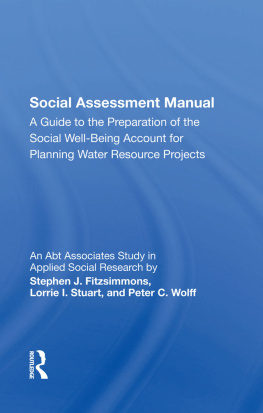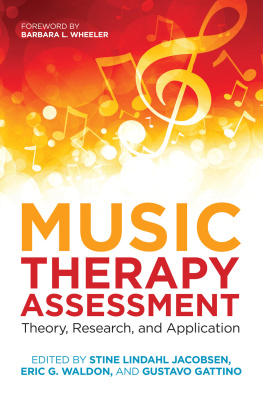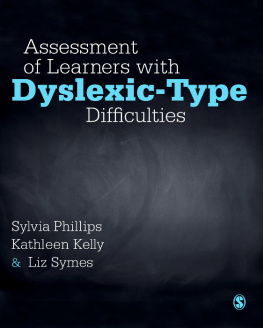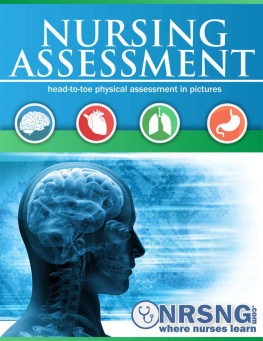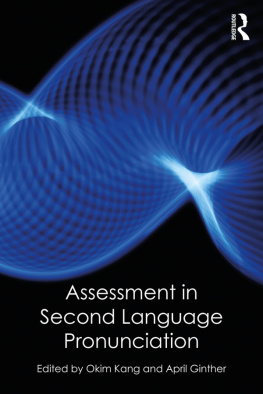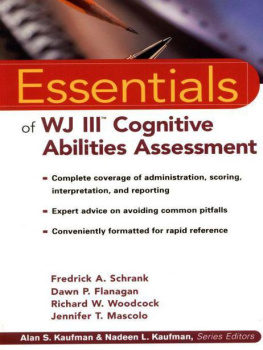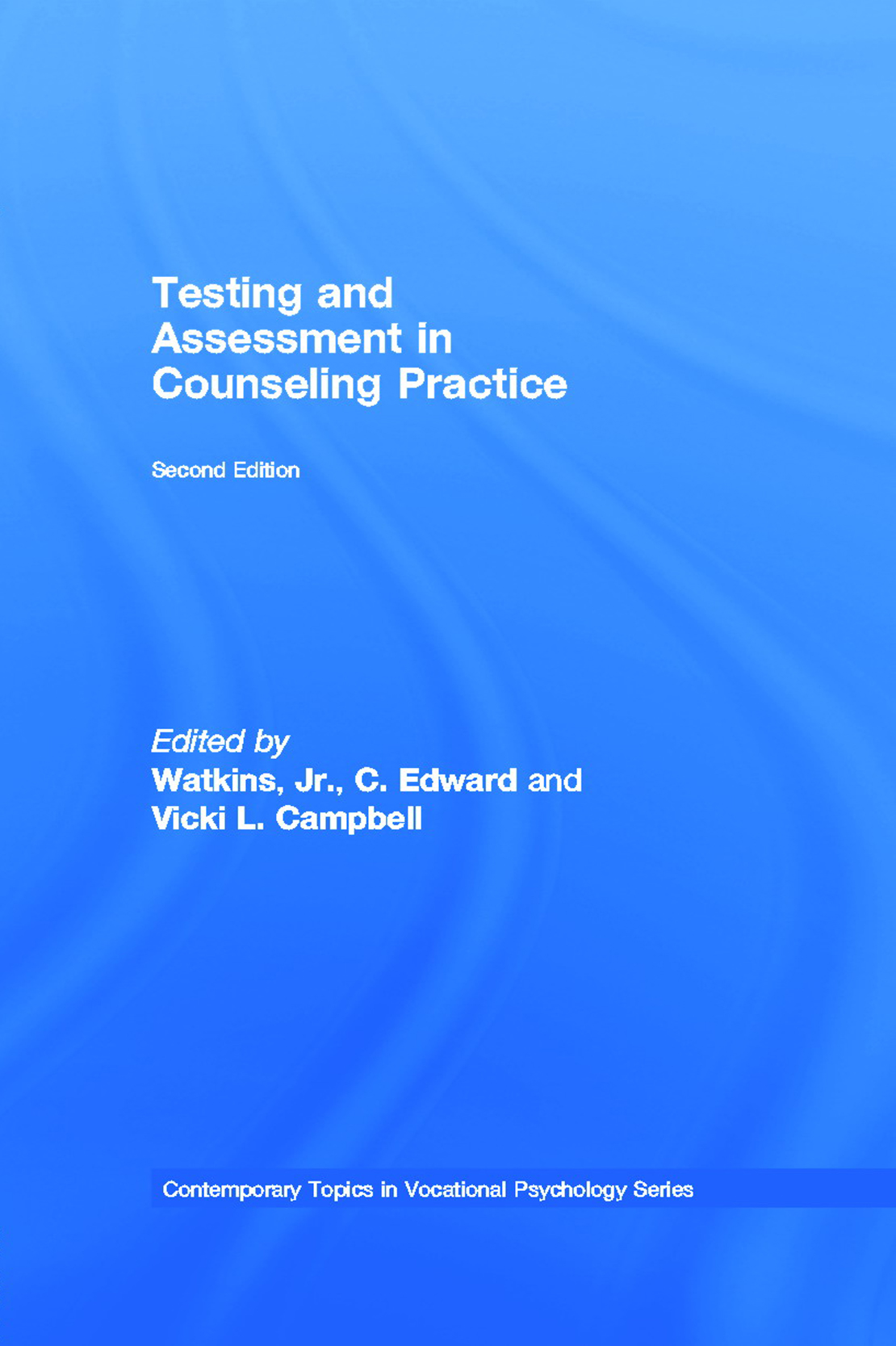Testing and Assessment in
Counseling Practice
Second Edition
Vocational Psychology
Samuel H.Osipow, Series Editor
Gilbert:Men in Dual-Career Families: Current Realities and Future Prospects
Leong:Career Development and Vocational Behavior of Racial and Ethnic Minorities
Stern & Eichorn:Adolescence and Work: Influences of Social Structure, Labor Markets, and Culture
Vondracek, Lerner, & Schulenberg:Career Development: A Life-Span Developmental Approach
Watkins & Campbell:Testing in Counseling Practice
Watkins & Campbell:Testing and Assessment in Counseling Practice, 2nd Edition
Testing and Assessment in
Counseling Practice
Second Edition
Edited by
C.Edward Watkins, Jr.
Vicki L.Campbell
University of North Texas

This edition published in the Taylor & Francis e-Library, 2009.
To purchase your own copy of this or any of
Taylor & Francis or Routledges collection of thousands of eBooks
please go to www.eBookstore.tandf.co.uk .
Copyright 2000 by Lawrence Erlbaum Associates, Inc.
All rights reserved. No part of this book may be reproduced
in any form, by photostat, microfilm, retrieval
system, or any other means, without prior written
permission of the publisher.
Lawrence Erlbaum Associates, Inc., Publishers
10 Industrial Avenue
Mahwah, NJ 07430
Cover design by Kathryn Houghtaling Lacey
Library of Congress Cataloging-in-Publication Data
Testing and assessment in counseling practice/edited by
C.Edward Watkins, Jr., Vicki L.Campbell.2nd ed.
p. cm.(Contemporary topics in vocational psychology)
Includes bibliographical references and index.
ISBN 0-8058-2380-8 (cloth: alk. paper)ISBN
0-8058-2381-6 (pbk.: alk. paper).
1. Psychological tests. 2. Personality tests. 3. Vocational
interestTesting. 4. Counseling. I. Watkins, C.
Edward. II. Campbell, Vicki Lynn. III. Series
BF176.T423 1999
150 .287dc21
9838251
CIP
ISBN 1-4106-0432-2 Master e-book ISBN
To our respective sources of support
Connie
and
Alan, Keith, and Alex
Contents
Preface to Second Edition
The first edition of this book was published in 1990. Since that time, continuing changes have been occurring in the field of assessment. Such changes led to the need for a second edition. As you will find, some of the tests covered here (e.g., the MMPI) have gone through major revision; others have continued to develop and we felt, for this book to remain viable, those developments, revisions, refinements, and extensions needed to be noted. The same lineup of tests or assessment procedures was kept for this edition.
Preface to First Edition
Testing has long been regarded as an important role of the counselor. Counselors traditionally have provided a variety of testing services, including personality, vocational, intellectual, and aptitude testing. In this book, we hope to consider further the role that tests play in the counseling process. Specifically, the purposes of this book are: (a) to provide important information on tests that are of value to counselors, (b) to provide information on how counselors think about and use tests, and (c) to illustrate how counselors can use different types of test information in counseling.
The book is designed to introduce readers to important theoretical, research, and practical information about the tests included here; it is oriented toward counselors, psychologists, and other mental health and education professionals. The book is suitable for graduate students who want to learn about different types of tests and for professionals who wish to get a comprehensive introduction about a test or tests. This book is appropriate for both masters-level and doctoral-level training courses that teach students about tests and their place in counseling.
In considering the tests covered here, an important point to remember is as follows: The tests were included because they focus more on a normal or relatively normal clientele. The tests presented in are suited most appropriately for clients who could be described as psychologically healthy or relatively healthy, nonpathological, and psychiatrically nondisturbed. The clients who use these tests may be mildly to moderately distressed, experiencing some type of developmental issue or concern (e.g., deciding on a career), and in need of facilitative information. For the most, these tests are designed to help individuals who are well-functioning or, functioning adequately in their life roles.
A number of books that focus on using tests with a more pathological or psychologically disturbed clientele are available. However, there seems to be a dearth of books that focus on using tests with a more healthy clientele. Counselors do need to be familiar with psychological disturbance, but they need to know that there are many psychologically nondisturbed clients who can profit from counseling (Watkins & Peterson, 1986). We hope this book will demonstrate how tests can be used effectively for counseling healthy well-functioning clients.
Although we regard the chapters as comprehensive introductions to certain tests, two points about this book are important to keep in mind. First, a basic Pledge of test and measurement concepts (e.g., reliability, validity) is made of the reader. Therefore, to be able to use and understand the information included here, such knowledge is requisite. This book on testing logically follows a basic testing/measurement course or, if used in the course, would logically follow source material (e.g., Anastasi, 1988; Walsh & Betz, 1985) that provides an understanding of basic measurement concepts. Second, although the test chapters are excellent and provide rich information, they are not meant to replace study of the test annuals and other more specific, indepth sources. We believe the material to follow provides the reader with a sound beginning knowledge base, which will then need to be further reinforced and refined by more specific study of the particular tests the counselor wishes to learn.
As indicated previously, each of the test chapters contains a blend of theory, research, and practice material. The theoretical portion provides the conceptual foundations for the test under consideration, whereas the research portion provides information supporting the test and considers directions in which future research efforts should move. The practice material focuses on the different ways in which counselors can use the test and also includes a case ample. We thought it was important to include a case example, to enable the reader to gain a better understanding of how the tests could actually be ed in practice. In developing the case example, we gave the contributors two options: (a) Drawing on a counseling case, present test information and show how to integrate it into the work of counseling; or (b) provided work with the client did not proceed beyond the assessment phase, indicate how to integrate the test information into the counseling process if you were to be seeing this client for counseling. Thus, a major purpose of the book is to show how tests should be used to facilitate the counseling process.
To assist the contributors in developing their chapters, an outline for them to follow was developed. We hoped the outline would provide some continuity within and across chapters and insure that a number of important areas would be addressed. Although we recommended that contributors examine our outline and use it as they deemed appropriate, it was presented more as a tool to use in chapter development rather than a fixed, inflexible format to which everyone had to adhere. So, some continuity can be expected between chapters, but some variation can be expected also.



